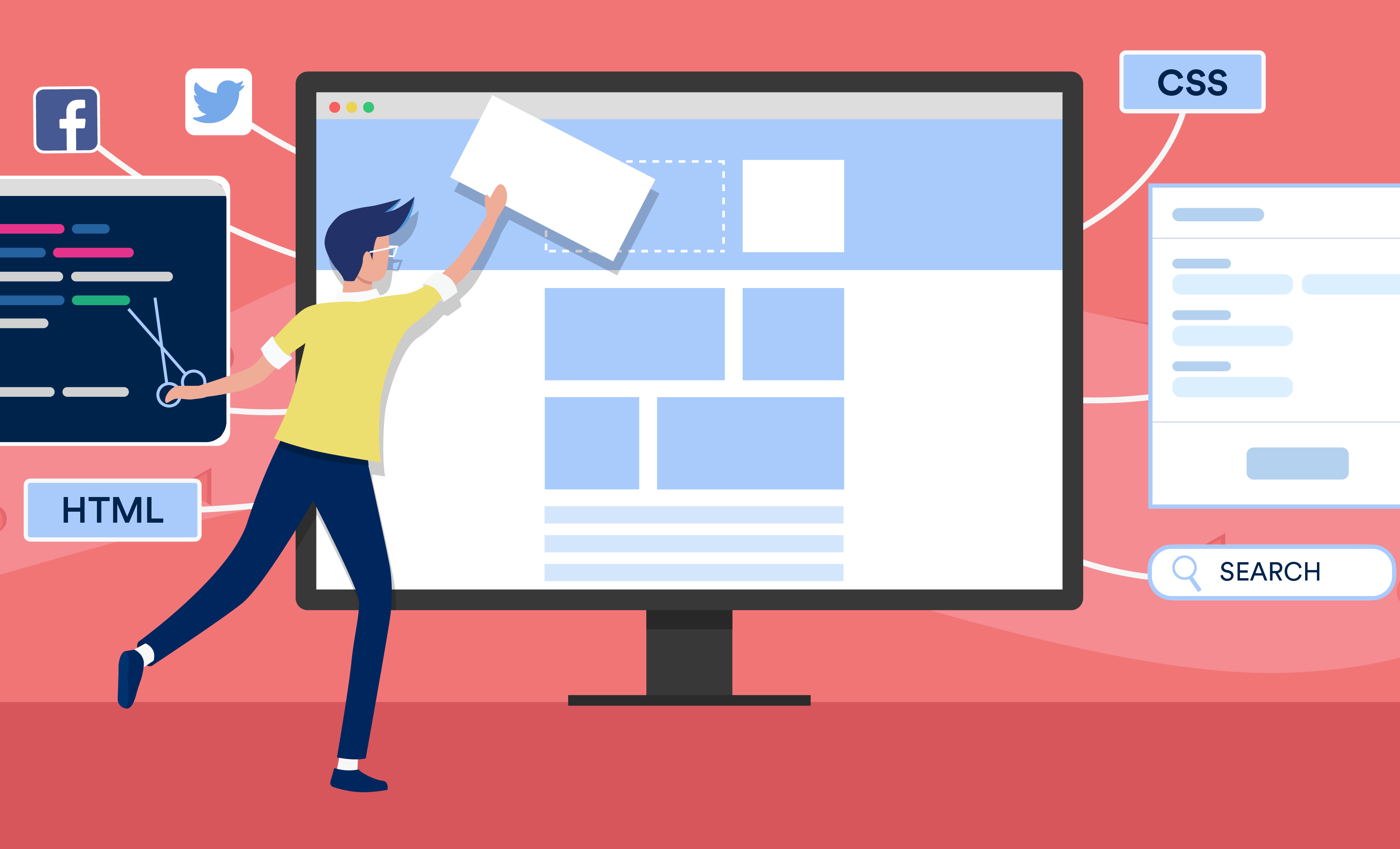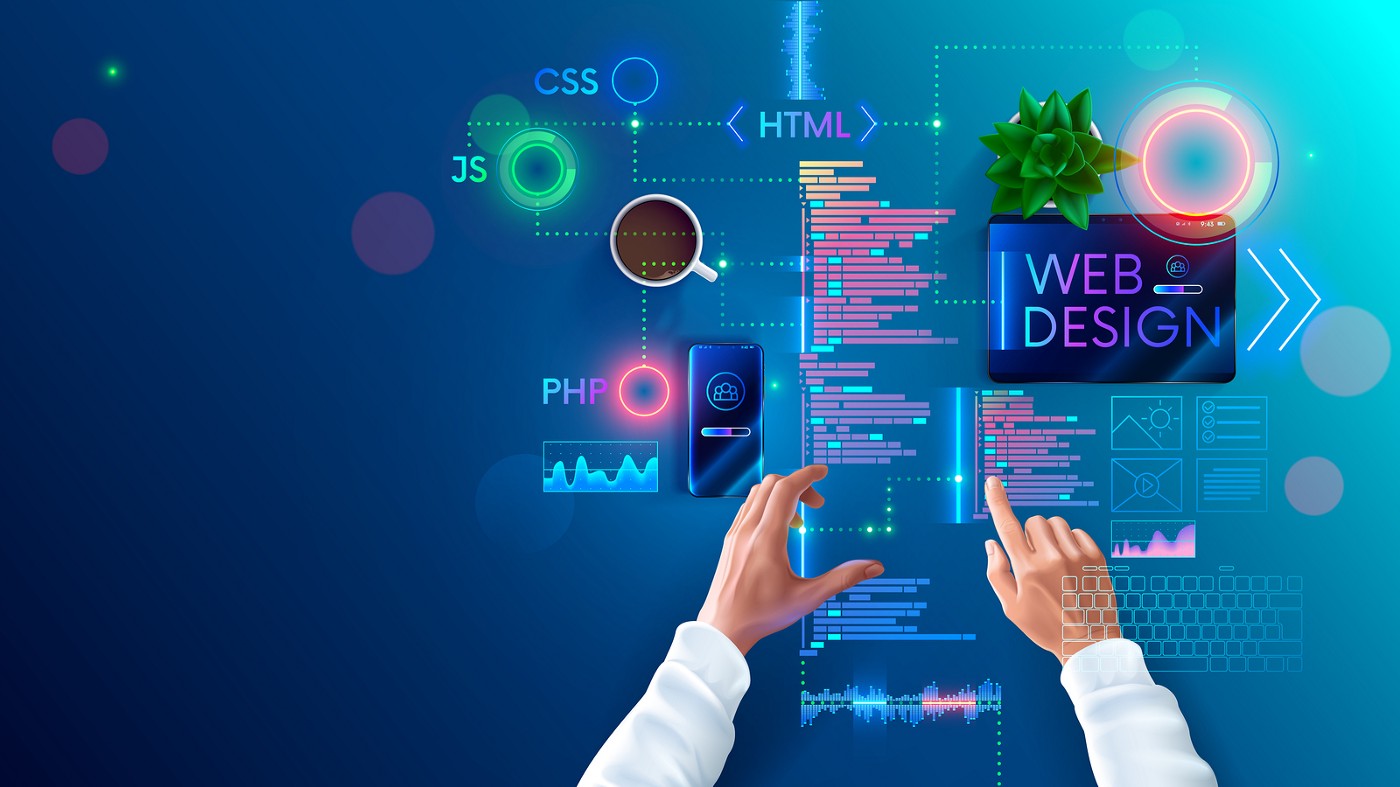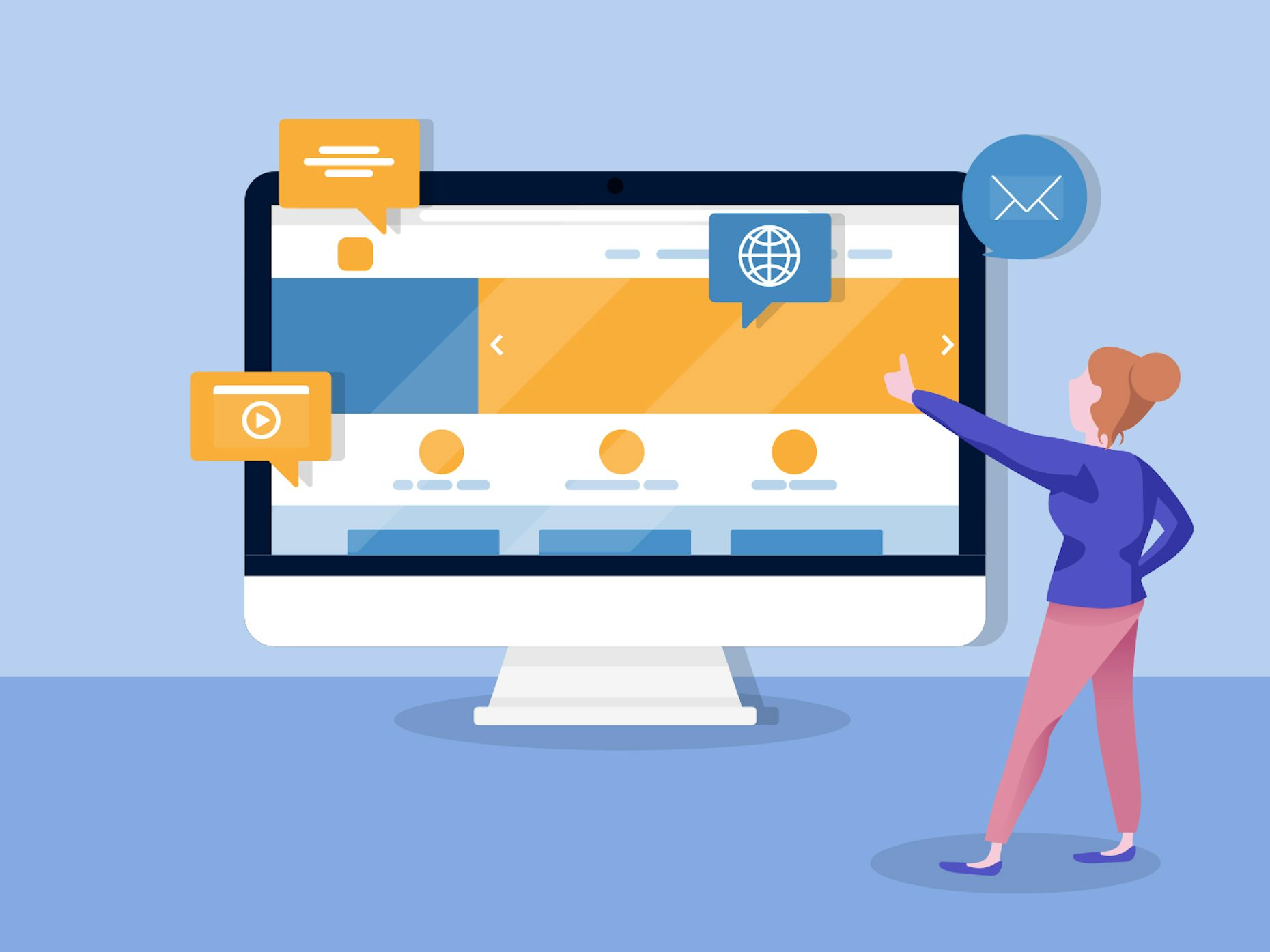All Categories
Featured
Table of Contents
- – Web Design And Applications - W3c Tips and Tri...
- – Collaborate & Create Amazing Graphic Design F...
- – Penner Home - Durham Web Design - Penner Web ...
- – Collaborate & Create Amazing Graphic Design F...
- – Arch Web Design: Top-rated Web Design Agency ...
- – Top 30 Web Design Companies - Apr 2022 - Desi...
- – Website Design - Best Ecommerce Web Design B...
- – Web Design Courses & Tutorials - Codecademy ...
- – Law Firm Website Design, Attorney Web Design...
- – Chavez Web Design: Web Design San Diego - Ba...
- – Learn Responsive Design - Web.dev Tips and T...
Web Design And Applications - W3c Tips and Tricks:
Quick summary Usability and the utility, not the visual style, determine the success or failure of a website. Because the visitor of the page is the only individual who clicks the mouse and for that reason chooses everything, user-centric style has actually developed as a basic method for successful and profit-oriented website design - web design frederick md.
and the utility, not the visual design, determine the success or failure of a website. Because the visitor of the page is the only person who clicks the mouse and for that reason chooses everything, user-centric style has actually ended up being a basic method for effective and profit-oriented website design. After all, if users can't utilize a feature, it may also not exist.
g. where the search box need to be put) as it has currently been done in a variety of short articles; instead we concentrate on the techniques which, utilized appropriately, can result in more sophisticated design choices and streamline the process of perceiving presented info. Please discover that you may be thinking about the usability-related articles we have actually published before: Principles Of Excellent Website Style And Reliable Website Design Guidelines, In order to utilize the concepts properly we first require to understand how users interact with websites, how they think and what are the fundamental patterns of users' behavior.
Collaborate & Create Amazing Graphic Design For Free Tips and Tricks:
Visitors glimpse at each brand-new page, scan some of the text, and click the first link that catches their interest or slightly resembles the thing they're searching for. There are large parts of the page they don't even look at. Most users search for something fascinating (or beneficial) and clickable; as quickly as some appealing candidates are discovered, users click.
If a page provides users with high-quality content, they want to compromise the material with advertisements and the style of the website. This is the factor why not-that-well-designed websites with top quality content get a lot of traffic over years. Content is more vital than the design which supports it.
Users don't check out, they scan. Notification how "hot" areas abrupt in the middle of sentences. This is common for the scanning process. Really easy concept: If a site isn't able to satisfy users' expectations, then designer failed to get his task done effectively and the business loses cash. The higher is the cognitive load and the less intuitive is the navigation, the more prepared are users to leave the site and search for alternatives.
Penner Home - Durham Web Design - Penner Web Design ... Tips and Tricks:
Neither do they scan webpage in a direct style, going sequentially from one website section to another one. Rather users satisfice; they choose the very first sensible choice. As quickly as they discover a link that appears like it may cause the objective, there is a very good chance that it will be immediately clicked.
It does not matter to us if we comprehend how things work, as long as we can utilize them. If your audience is going to imitate you're creating billboard, then design fantastic signboards." Users want to have the ability to control their internet browser and depend on the consistent information discussion throughout the website.
If the navigation and site architecture aren't intuitive, the number of enigma grows and makes it harder for users to understand how the system works and how to get from point A to point B. A clear structure, moderate visual hints and easily identifiable links can help users to discover their course to their objective.
Collaborate & Create Amazing Graphic Design For Free Tips and Tricks:

claims to be "beyond channels, beyond products, beyond distribution". What does it imply? Given that users tend to check out sites according to the "F"-pattern, these 3 declarations would be the very first components users will see on the page once it is loaded. Although the design itself is basic and instinctive, to understand what the page is about the user requires to search for the response.
When you have actually accomplished this, you can communicate why the system works and how users can take advantage of it. Individuals will not utilize your website if they can't find their way around it. 2. Don't Squander Users' Patience, In every task when you are going to provide your visitors some service or tool, try to keep your user requirements minimal.
Novice visitors are willing to, not filling long web types for an account they may never ever use in the future. Let users check out the site and find your services without requiring them into sharing personal information. It's not sensible to force users to enter an email address to evaluate the feature.
Arch Web Design: Top-rated Web Design Agency For Saas ... Tips and Tricks:
Stikkit is a best example for an easy to use service which requires practically nothing from the visitor which is unobtrusive and comforting. And that's what you want your users to feel on your web site. Obviously, Termite requires more. However the registration can be carried out in less than 30 seconds as the kind has horizontal orientation, the user does not even require to scroll the page.
A user registration alone suffices of an obstacle to user navigation to minimize incoming traffic. 3. Manage To Focus Users' Attention, As sites supply both static and vibrant material, some elements of the user interface bring in attention more than others do. Clearly, images are more appealing than the text just as the sentences marked as bold are more attractive than plain text.
Focusing users' attention to specific areas of the site with a moderate use of visual elements can assist your visitors to receive from point A to point B without thinking about how it actually is expected to be done. The less enigma visitors have, the they have and the more trust they can develop towards the company the website represents.
Top 30 Web Design Companies - Apr 2022 - Designrush Tips and Tricks:
Aim For Feature Direct exposure, Modern web designs are usually criticized due to their technique of guiding users with aesthetically appealing 1-2-3-done-steps, big buttons with visual effects etc. From the style viewpoint these elements really aren't a bad thing.
The website has 9 main navigation alternatives which are noticeable at the first glimpse. What matters is that the material is well-understood and visitors feel comfy with the way they engage with the system.
Instead a price: simply what visitors are looking for. An optimum option for efficient writing is touse short and concise expressions (come to the point as rapidly as possible), usage scannable design (categorize the content, utilize numerous heading levels, use visual elements and bulleted lists which break the flow of consistent text blocks), use plain and objective language (a promotion does not require to sound like ad; provide your users some affordable and objective factor why they ought to utilize your service or stay on your site)6.
Website Design - Best Ecommerce Web Design By Shopify Tips and Tricks:
Users are seldom on a site to take pleasure in the design; in addition, for the most part they are trying to find the information in spite of the design - web design frederick md. Pursue simpleness instead of intricacy. From the visitors' perspective, the best site design is a pure text, without any advertisements or additional material blocks matching precisely the inquiry visitors used or the material they have actually been trying to find.
Finch plainly provides the info about the site and offers visitors a choice of choices without overcrowding them with unneeded content. Not only does it assist to for the visitors, however it makes it possible to perceive the information presented on the screen.
Complex structures are more difficult to check out, scan, examine and deal with. If you have the choice in between separating two design segments by a noticeable line or by some whitespace, it's generally much better to use the whitespace service. (Simon's Law): the much better you handle to provide users with a sense of visual hierarchy, the simpler your content will be to perceive.
Web Design Courses & Tutorials - Codecademy Tips and Tricks:
The very same conventions and rules need to be applied to all elements.: do the most with the least amount of hints and visual aspects. 4 significant points to be thought about: simplicity, clearness, diversity, and emphasis. Simplicity includes only the elements that are crucial for communication. Clearness: all parts should be created so their meaning is not ambiguous.
Conventions Are Our Buddies, Traditional style of site components does not result in a boring web website. It would be an usability headache if all sites had different visual presentation of RSS-feeds.
comprehend what they're getting out of a site navigation, text structure, search positioning etc. A case in point from usability sessions is to translate the page in Japanese (presuming your web users do not know Japanese, e. g. with Babelfish) and provide your use testers with a task to discover something in the page of various language.
Law Firm Website Design, Attorney Web Design, Lawyer ... Tips and Tricks:
Test Early, Test Frequently, This so-called TETO-principle ought to be used to every web design task as usability tests often provide into significant problems and issues related to a provided design. Test not too late, not too little and not for the wrong factors.
Some crucial indicate bear in mind: according to Steve Krug, and screening one user early in the job is much better than screening 50 near completion. Accoring to Boehm's very first law, mistakes are most regular during requirements and design activities and are the more expensive the later on they are eliminated.
That indicates that you create something, test it, fix it and then test it again. There may be issues which have not been discovered during the preliminary as users were almost obstructed by other issues. usability tests. Either you'll be indicated the issues you have or you'll be indicated the absence of major design defects which remains in both cases a beneficial insight for your project.
Chavez Web Design: Web Design San Diego - Bakersfield ... Tips and Tricks:

This holds for designers also. After you have actually worked on a site for couple of weeks, you can't observe it from a fresh viewpoint any longer. You know how it is constructed and for that reason you understand precisely how it works you have the knowledge independent testers and visitors of your website wouldn't have.
It can be linked to other areas such as graphic style, user experience, and multimedia arts, however is more aptly seen from a technological viewpoint. It has ended up being a big part of individuals's daily lives. It is difficult to envision the Internet without animated graphics, various styles of typography, background, videos and music.

During 1991 to 1993 the World Wide Web was born. Text-only pages could be seen using a simple line-mode web browser. There had been no integrated technique to graphic design aspects such as images or sounds.
Learn Responsive Design - Web.dev Tips and Tricks:
The W3C was developed in October 1994 to "lead the World Wide Web to its full capacity by developing common procedures that promote its evolution and guarantee its interoperability." This dissuaded any one business from monopolizing a propriety browser and shows language, which could have changed the impact of the World Wide Web as a whole.
As this has actually taken place the innovation of the web has actually likewise moved on. There have also been substantial changes in the method people use and access the web, and this has actually changed how sites are designed. Considering that the end of the web browsers wars [] brand-new web browsers have been released. A number of these are open source indicating that they tend to have faster advancement and are more helpful of brand-new requirements.
Learn more about Lovell Media Group LLC or TrainACETable of Contents
- – Web Design And Applications - W3c Tips and Tri...
- – Collaborate & Create Amazing Graphic Design F...
- – Penner Home - Durham Web Design - Penner Web ...
- – Collaborate & Create Amazing Graphic Design F...
- – Arch Web Design: Top-rated Web Design Agency ...
- – Top 30 Web Design Companies - Apr 2022 - Desi...
- – Website Design - Best Ecommerce Web Design B...
- – Web Design Courses & Tutorials - Codecademy ...
- – Law Firm Website Design, Attorney Web Design...
- – Chavez Web Design: Web Design San Diego - Ba...
- – Learn Responsive Design - Web.dev Tips and T...
Latest Posts
Web Design Definition - Techterms Tips and Tricks:
Arch Web Design: Top-rated Web Design Agency For Saas ... Tips and Tricks:
Collaborate & Create Amazing Graphic Design For Free Tips and Tricks:
More
Latest Posts
Web Design Definition - Techterms Tips and Tricks:
Arch Web Design: Top-rated Web Design Agency For Saas ... Tips and Tricks:
Collaborate & Create Amazing Graphic Design For Free Tips and Tricks: